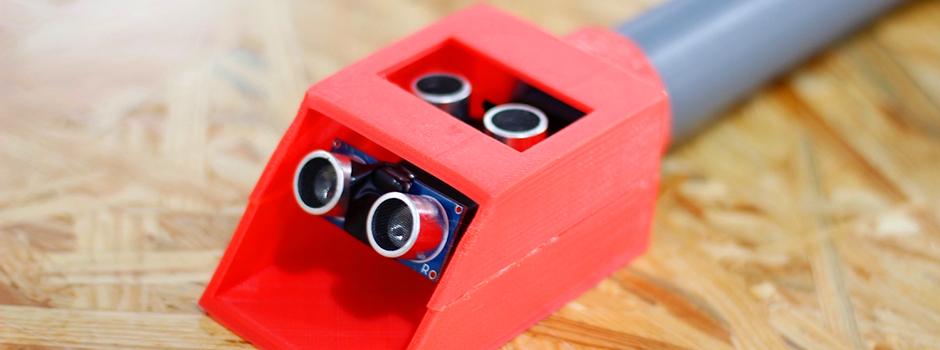Soon, the visually impaired will be alerted to avoid road hazards with the assistance of “The Third Eye," an award-winning guiding instrument devised by student “makers” from NYU Shanghai enthusiastic about advancing public welfare.
The leading members of Enactus NYU Shanghai society, led by its president Eric Hancheng Zuo ‘19 and project manager Ziyuan Zhao ‘19, spent six sleepless months promoting this ultrasonic sensing hardware that is said to “integrate pragmatism with technology." In early August, “The Third Eye” project claimed a Gold Award in the 5th China Public Welfare Project Contest, ranking third of all university student projects.
“The Third Eye” contains three modules of ultrasonic sensors, a control circuit and buzzers, according to Zhao. The sensors will scan road conditions and alarms will buzz when potholes and stairs are detected.
Zhao said the team had to overcome several unexpected obstacles, such as welding circuit boards, programming and business promotion.
“Detecting the best marketing model for our product was probably one of the most difficult challenges,” Zhao said, adding that the whole team had to reach out to visually-impaired groups in order to test and promote the device.

Xincheng Huang ‘19, technical director of Enactus NYU Shanghai said the project has altered his understanding of public welfare fundamentally, as he was amazed to find “hundreds and even thousands” of like-minded people pursuing the same goal during the final phase of the contest.
“It has also refreshed my approach to working on public welfare projects. I realized that having enthusiasm alone is not enough. In order to push such a project forward, we had to use every tool and resource we had,” Huang said.
As a winning project, “The Third Eye” has earned incubation and financing services from the organizers in addition to some 80,000 yuan (US$ 12,000) prize money. Zuo, president of Enactus NYU Shanghai, said his team will focus more on technological research during the upcoming semester.
“Our objective in the next six months is to install voice-notification, develop more sensitive and reliable sensors, and have braille notes printed on our new prototypes,” he added.



